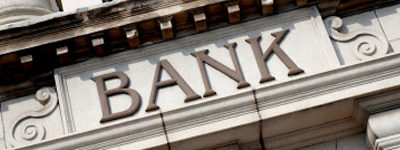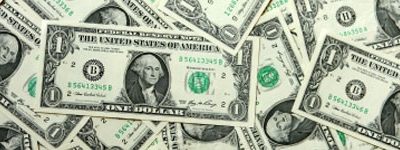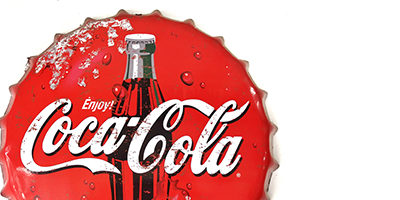%
Jubak’s Picks Performance 1997-2019
Jubak’s Picks
Buy and hold? Not really.
Short-term trading?
Not by a long shot.
So what is the stock-picking style of The Jubak’s Picks portfolio?
Click to expand...
Click to View the Jubak’s Picks Portfolio
I try to go with the market’s momentum when the trend is strong and the risk isn’t too high, and I go against the herd when the bulls have turned piggy and the bears have lost all perspective. What are the results of this moderately active — the holding period is 12 to 18 months — all-stock portfolio since inception in May 1997? A total return of 584% as of December 31, 2019. That compares to a total return on the S&P 500 stock index of 335% during the same period.
%
Top 50 Stocks Performance 2019
Top 50 Stocks
This long-term, buy-and-holdish portfolio was originally based on my 2008 book The Jubak Picks.
Trends that are strong enough, global enough, and long-lasting enough to surpass stock market averages.
Click to expand...
Click to view the Top 50 Stocks Portfolio
In The Jubak’s Picks Portfolio I identified ten trends that were strong enough, global enough, and long-lasting enough to give anyone who invested in them a good chance of beating the stock market averages.
To mark the publication of my new book on volatility, Juggling with Knives, and to bring the existing long-term picks portfolio into line with what I learned in writing that book and my best new ideas on how to invest for the long-term in a period of high volatility, I’m completely overhauling the existing Top 50 Picks portfolio.
You can buy Juggling with Knives at bit.ly/jugglingwithknives
%
Dividend Income Performance 2021
Dividend Income
Every income investor needs a healthy dose of dividend stocks.
Why bother?
Why not just concentrate on bonds or CDs?
Click to expand...
Click to view the Dividend Income Portfolio
Because all the different income-producing assets available to income investors have characteristics that make them suited to one market and not another. You need all of these types of assets if you’re going to generate maximum income with minimum risk as the market twists and turns.
For example: bonds are great when interest rates are falling. Buy early in that kind of market and you can just sit back and collect that initial high yield as well as the capital gains that are generated as the bonds appreciate in price with each drop in interest rates.
CDs, on the other hand, are a great way to lock in a yield with almost absolute safety when you’d like to avoid the risk of having to reinvest in an uncertain market or when interest rates are crashing.
Dividend stocks have one very special characteristic that sets them apart from bonds and CDs: companies raise dividends over time. Some companies raise them significantly from one quarter or year to the next. That makes a dividend-paying stock one of the best sources of income when interest rates start to rise.
Bonds will get killed in that environment because bond prices will fall so that yields on existing bonds keep pace with rising interest rates.
But because interest rates usually go up during periods when the economy is cooking, there’s a very good chance that the company you own will be seeing rising profits. And that it will raise its dividend payout to share some of that with shareholders.
With a dividend stock you’ve got a chance that the yield you’re collecting will keep up with rising market interest rates.
But wouldn’t ya know it?
Just when dividend investing is getting to be more important—becoming in my opinion the key stock market strategy for the current market environment—it’s also getting to be more difficult to execute with shifting tax rates and special dividends distorting the reported yield on many stocks.
I think there’s really only one real choice—investors have to pull up their socks and work even harder at their dividend investing strategy. That’s why I revamped the format of the Dividend Income portfolio that I’ve been running since October 2009. The changes aren’t to the basic strategy. That’s worked well, I think, and I’ll give you some numbers later on so you can judge for yourself. No, the changes are designed to do two things: First, to let you and me track the performance of the portfolio more comprehensively and more easily compare it to the performance turned in by other strategies, and second, to generate a bigger and more frequent roster of dividend picks so that readers, especially readers who suddenly have a need to put more money to work in a dividend strategy, have more dividend choices to work with.
Why is dividend investing so important in this environment? I’ve laid out the reasons elsewhere but let me recapitulate here. Volatility will create repeated opportunities to capture yields of 5%–the “new normal” and “paranormal” target rate of return–or more as stock prices fall in the latest panic. By using that 5% dividend yield as a target for buys (and sells) dividend investors will avoid the worst of buying high (yields won’t justify the buy) and selling low (yields will argue that this is a time to buy.) And unlike bond payouts, which are fixed by coupon, stock dividends can rise with time, giving investors some protection against inflation.
The challenge in dividend investing during this period is using dividend yield as a guide to buying and selling without becoming totally and exclusively focused on yield. What continues to matter most is total return. A 5% yield can get wiped out very easily by a relatively small drop in share price.
Going forward, I will continue to report on the cash thrown off by the portfolio—since I recognize that many investors are looking for ways to increase their current cash incomes. But I’m also going to report the total return on the portfolio—so you can compare this performance to other alternatives—and I’m going to assume that an investor will reinvest the cash from these dividend stocks back into other dividend stocks. That will give the portfolio—and investors who follow it—the advantage of compounding over time, one of the biggest strengths in any dividend income strategy.
What are some of the numbers on this portfolio? $29,477 in dividends received from October 2009 through December 31, 2013. On the original $100,000 investment in October 2009 that comes to a 29.5% payout on that initial investment over a period of 39 months. That’s a compound annual growth rate of 8.27%.
And since we care about total return, how about capital gains or losses from the portfolio? The total equity price value of the portfolio came to $119,958 on December 31, 2012. That’s a gain of $19,958 over 39 months on that initial $100,000 investment or a compound annual growth rate of 5.76%.
The total return on the portfolio for that period comes to $49,435 or a compound annual growth rate of 13.2%.
How does that compare to the total return on the Standard & Poor’s 500 Stock Index for that 39-month period? In that period $100,000 invested in the S&P 500 would have grown to $141,468 with price appreciation and dividends included.) That’s a total compounded annual rate of return of 11.26%.
That’s an annual 2 percentage point advantage to my Dividend Income portfolio. That’s significant, I’d argue, in the context of a low risk strategy.
Portfolio Related Posts
Selling Citigroup out of my Dividend Portfolio after Friday’s 13% pop
Shares of Citigroup climbed by 13.23% on Friday, July 15, after the company reported earnings of $2.19 a share. Revenue came in at $19.6 billion. Wall Street had projected earnings of $1.689 a share and revenue of $18.4 billion. So it’s not surprising that the stock rose strongly after the report. Or that the gains dragged other bank stocks higher too. For example, Bank of America (BAC), which reports on Monday, July 18, gained 7.04%. Wells Fargo (WFC) climbed 6.17%. To which I say, Thank you, and I’m selling.
Adding Invesco Dollar Bullish Fund ETF to three portfolios
In my July 7 YouTube video: “Quick Pick UUP” I added the Invesco DB U.S. Dollar Index Bullish Fund (UUP) to my Perfect 5 ETF Portfolio. (To replace the Consumer Staples Select Sector SPDR ETF (XLP) in that portfolio. More on that in another post today.) Today I’m also going to add this dollar ETF to my Volatility Portfolio and to my Jubak Picks Portfolio. I’m setting a target price of $33.20 in the Jubak Picks Portfolio. You should take the fact that I’m adding a dollar position to three portfolios as an indication of how strongly I feel about a continued strong dollar.
Consumer staples outperform on Wednesday
It’s not surprising given the greater than expected decline in U.S. first quarter GDP reported on Wednesday, which followed on the slump in consumer confidence reported Tuesday, that stocks in the consumer staples sector outperformed both consumer discretionary stocks and the market in general. The Consumer Staples Select Sector SPDR ETF (XLP) gained 0.63% on Wednesday, June 29. By contrast the Consumer Discretionary Select Sector SPDR ETF (XLY) lost 0.08%.
Please Watch My New YouTube Video: Quick Pick Cheniere Energy
My Quick Pick this week is Cheniere Energy (LNG), a liquified natural gas producer that I currently own in my Volatility Portfolio on JubakAM.com and plan to add to my Jubak Picks portfolio as well. The stock has fallen as U.S. natural gas prices have taken a hit after a fire at the Freeport liquified natural gas facility that has caused a backup in U.S. LNG exports. I think it’s a great time to get in on this long-term story at Cheniere, which just announced that it had given the go-ahead to the construction of a new LNG chain at its Corpus Christi facility. That chain won’t be in operation until 2025 but I see the demand for U.S. LNG continuing to rise through then.
Please Watch My YouTube Video: Trend of the Week Hedging With Commodities Lives
My one-hundred-and-fifty-ninth YouTube video “Trend of the Week Hedging with Commodities Lives” went up today. The strong dollar has knocked commodity plays around. But the reasons for buying these hedges still hold. Inflation. Supply shortages (especially in agricultural commodities.) I think there’s still a strong case that commodities are a good way to hedge this market.
Please Watch My New YouTube Video: Quick Pick Kimberly-Clark
My one-hundred-and-fifty-second YouTube video “Quick Pick Kimberly Clark” went up today. This week I’m looking at Kimberly-Clark (KMB), a consumer staples producer that I’m sure many of you are familiar with. I think in the coming recession, this stock will be well insulated: Consumers will continue to buy brands such as Kleenex, Depend, and Cottonelle. So far this year, the stock is down but has outperformed the S&P. Today, July 1, the shares gained 1.19%. The stock pays a 3.5% dividend and I will be adding it to my Dividend Portfolio after the holiday.
Bad day for consumer stocks; good day for commodity shares
The Conference Board’s latest reading on consumer confidence showed consumer expectations in June fell to their lowest level since 2013. The consumer confidence index for June fell to 98.7 from 103.2 in May, below expectations for a reading of 100. The report’s expectations index, which is based on consumers’ short-term outlook for income growth, the job market, and overall business conditions, fell to 66.4, its lowest reading since March 2013.
Biting the (Federal Reserve) bullet and selling two yield ETFs out of my Dividend Portfolio
I’ve probably overstayed my welcome in the Vanguard Short-Term Treasury ETF (VGSH) and the VanEck Preferred Securities ex-Financials ETF (PFXF), but with the Federal Reserve accelerating its interest rate increases, I think selling these two members of my Dividend Portfolio is a bit more pressing right now.









